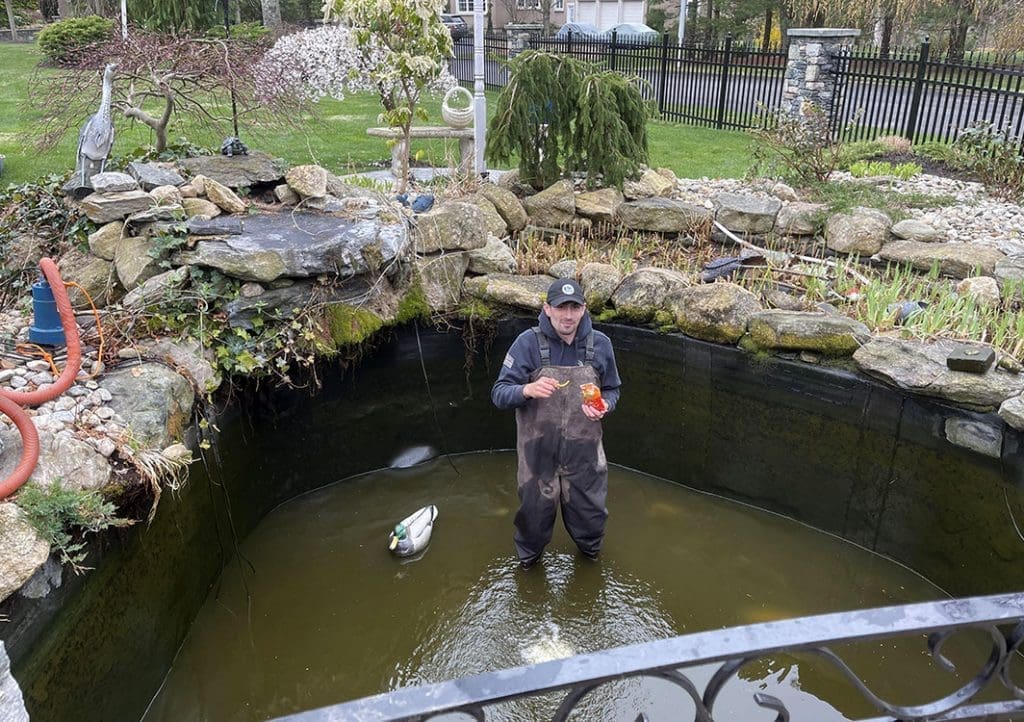New England Aquatic Landscapes Helps You Create a Healthy and Beautiful Pond Environment
Pond algae are a common and natural part of aquatic ecosystems, but when left unchecked, they can disrupt the balance of your pond and become unsightly. New England Aquatic Landscapes is here to help you understand, treat, and control algae growth to ensure your pond remains a beautiful and healthy environment for all its inhabitants.
Understanding Pond Algae Algae are simple aquatic organisms that thrive in water and sunlight, converting these resources into energy through photosynthesis. There are two main types of pond algae: single-celled (microscopic) and filamentous (string-like). Both types can grow quickly and become problematic if not managed properly. Algae blooms are common in nutrient-rich water and can deplete oxygen levels, affecting fish and other aquatic life.
Causes of Algae Growth Several factors contribute to algae growth in ponds, including:
Excess nutrients: High levels of nutrients, particularly nitrogen and phosphorus, can lead to rapid algae growth. Common sources include fertilizer runoff, decomposing plant material, and fish waste.
Sunlight: Algae need sunlight to grow, so ponds that receive a lot of direct sunlight may be more susceptible to algae blooms.
Low oxygen levels: Stagnant water and low oxygen levels can contribute to algae growth by promoting the decomposition of organic material, which releases more nutrients.
- Preventing Algae Growth To prevent algae growth in your pond, consider the following tips:
Balance your pond: Ensure your pond has a healthy balance of fish, plants, and beneficial bacteria to naturally regulate nutrient levels.
Limit sunlight exposure: Introduce shade to your pond with floating plants or by strategically placing landscape elements.
Add aeration: Incorporate a pond aerator or waterfall to increase oxygen levels and promote circulation, preventing stagnation.
Proper filtration: Invest in a high-quality pond filtration system to remove excess nutrients and debris.
- Treating Algae Growth If you’re already dealing with algae in your pond, try these methods to treat and control it:
Manual removal: Physically remove large clumps of filamentous algae with a rake or skimmer net.
Algaecides: Use algaecides specifically formulated for ponds, following the manufacturer’s instructions carefully to avoid harming fish and plants.
Beneficial bacteria: Add beneficial bacteria products to consume excess nutrients and break down organic waste, limiting the resources available for algae growth.
Barley straw: Place barley straw in a mesh bag and submerge it in the pond. As it decomposes, it releases compounds that help inhibit algae growth.
- Seeking Professional Help If you’re struggling to manage algae in your pond, consider enlisting the help of New England Aquatic Landscapes. Our team of experts can assess your pond’s unique needs and recommend the most effective solutions for maintaining a healthy and beautiful aquatic environment.
Properly managing and controlling pond algae is essential for maintaining a healthy and visually appealing aquatic landscape. By understanding the causes of algae growth and implementing preventive measures and treatments, you can enjoy a balanced and thriving pond ecosystem. If you need assistance, New England Aquatic Landscapes is here to help.




